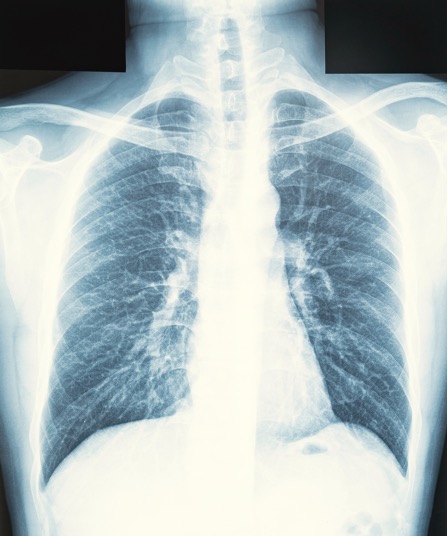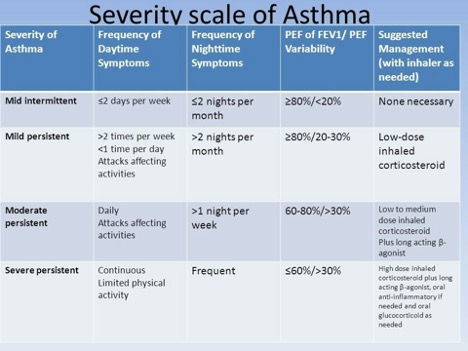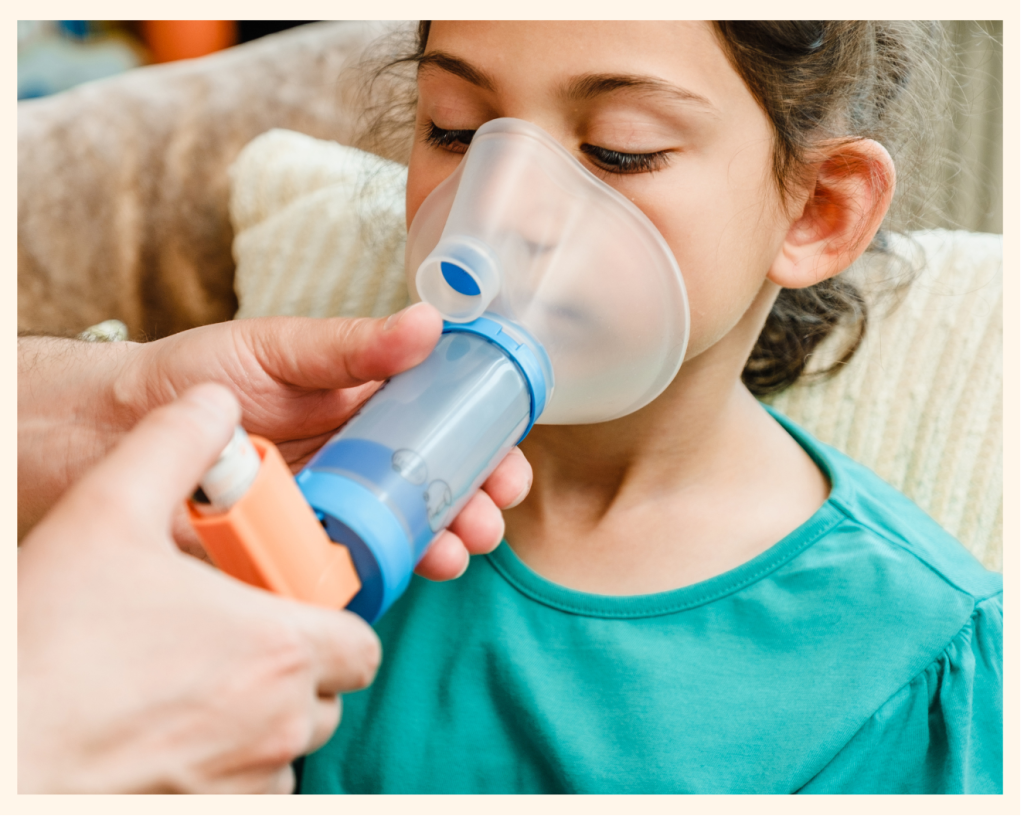Course
Self-Management Skills for Asthma
Course Highlights
- In this Self-Management Skills for Asthma course, we will learn about the pathophysiology and etiology of asthma.
- You’ll also learn how to assess a patient with asthma exacerbation.
- You’ll leave this course with a broader understanding of current asthma research findings.
About
Contact Hours Awarded: 1
Course By:
Elaine Enright BSN, RN
Begin Now
Read Course | Complete Survey | Claim Credit
➀ Read and Learn
The following course content
Introduction
As nurses, we know that asthma is a lifelong illness with millions of people in the United States having this disease. Asthma affects a person’s bronchial tree, airways, and lungs so that they have difficulty breathing. The most common signs of asthma are wheezing, chest tightness, and coughing as symptoms. (1). Asthma is chronic and inflammatory, and in many cases causes changes in the structure of the airway, which can cause fibrosis in the lower airways, injury to epithelial cells, mucus hyposecretion, and angiogenesis. (5)
Asthma obstructs the airways by increasing inflammation in and narrowing them, hyper-responsiveness of the bronchial tubes and lungs. (5) At this point, researchers are studying the genetics of asthma as they may play a role in this disease.

Self-Quiz
Ask Yourself...
- Have you ever worked with asthma patients?
- What did you assess when a patient was having an asthma attack?
- Do you know someone with chronic asthma?
Epidemiology
Since the early 1990’s the rate of asthma has increased from 34.7 to 49.4 per thousand people. (4)
Approximately 8% of the US population have asthma and young males are more susceptible than females due to females having larger airways. (4) Asthma may be inherited, however, there are likely more genes involved than we know, because it does not follow a Mendelian pattern. (4)
It is more common in adult females and Afro-American adults. Asthma is also a leading chronic disease in children with approximately 4.8 million children under 18 having asthma. Non-Hispanic black children are two times more likely to develop this disease than non-Hispanic white children. (1) “In the year 2020, 42.7% of children ages 18 and younger who had asthma reported having 1 or more asthma attacks in the past year”. (1) In adults for that year, 40.7% had one or more attacks that same year. (1) Also, in 2020 asthma deaths increased for the first time since 2000. (1)
The cost of asthma was more than $81.9 billion in the US which includes lost work and school days, medications, and deaths. Asthmatics cost $3,266 more than those without asthma and 13.8 million days of missed school in 2015. (1)

Self-Quiz
Ask Yourself...
- How can you discern why there is a difference between white patients and African Americans in becoming asthmatic?
- Can you find the latest statistics on asthma-related to the above?
- If females have larger airways, why do you think adult females are more susceptible to contracting asthma?
Pathophysiology
In asthma, we know the respiratory system is the major system affected. The lungs consist of segments and lobes with the right lung having 10 segments, 1-2 more than the left. (4) This is because the heart lies on the left of the chest cavity taking up space. The bronchial tree is responsible for distributing air throughout the lungs to the alveolar sacs where gases are exchanged. The bronchial tree divides into the left and right bronchi, the right having a wider diameter than the left. (4)
There are 2 phases of asthma exacerbation. (4) The first phase consists of antibodies which are released by the cells. These IgE antibodies bind to high-affinity mast cells and basophils. When a risk factor or something from the environment is taken in by the lungs it causes the mast cells to secrete cytokines, “histamine, leukotrienes, and prostaglandins.” (4)
These cytokines cause contraction of smooth muscles which then cause airways to tighten. At this point, interleukins are produced by lymphocytes and Interleukin 13 can cause fibrosis, remodeling, and hyperplasia. (4)
The second phase of an exacerbation occurs in the next few hours. During this phase, the white cells c eosinophils, basophils and helper T-cells all migrate to the lungs causing more inflammation in airways and broncho-constriction (4). This inflammation can cause higher airway responsiveness, limit airflow, and allow for the chronicity of asthma, and respiratory signs and symptoms. (5)
Some asthmatics have consistent changes in their airways and may develop high secretions of mucus, epithelial cell injury, fibrosis hypertrophy of the smooth muscle, and angiogenesis. (5) The strongest indicator of developing asthma is the genetic predisposition called Atopy, which is the tendency to produce an exaggerated immunoglobulin E (IgE) immune response to otherwise harmless substances in the environment. (5) This information was obtained from a blood test.
The most common cause of asthma exacerbation is viral illnesses, such as the flu, RSV, and now Covid-19. (5)


Self-Quiz
Ask Yourself...
- Where can you find more information on the two phases of asthma exacerbation?
- Can you identify the job of Interleukin?
- What other diseases will be identified by Atopy?
Clinical Signs and Symptoms
There are 4 symptoms of asthma exacerbation which are described below. These signs and symptoms may be somewhat different in each patient with the difference being in age, race, and gender.
- Persistent cough lasts over 8 weeks in adults with 4 weeks in children.
- Wheezing is a symptom where breath sounds are whistling or squeaking, which occurs when blockages or inflammation of a person’s airways are present.
- Heavy feeling and/or chest tightness. It is important to ascertain what is causing this discomfort as other diseases/illnesses may cause this tightness.
- Dyspnea or shortness of breath. Again, it is important to determine the cause.
(6)
There are also 4 stages of severity in asthma.
- Intermittent: 2 or less days a week with no activity impact.
- Mild persistent: More than 2 days per week with minor interruptions in activity.
- Moderate persistent: Daily symptoms with increasing interruptions in activity. NOTE: This is the second most severe form of asthma. (6)
- Severe persistence: Symptoms throughout the day with significant interruptions in daily activities. This is the most severe form of asthma.
The scale below further demonstrates the severity scale of Asthma:

(6)
A very important diagnostic tool is continuous pulse oximetry when the patient is either in an acute phase or while being treated for exacerbation. Any oxygen number below 92% should be treated.

Self-Quiz
Ask Yourself...
- What types of irritants are most common in asthma?
- How would you discern chest discomfort in a patient who has never had an asthma attack in the past?
- Where can you find more details on the stages of asthma?
Etiology
Asthma is very common. As we now know there are several ranges of this illness. It can range from intermittent to severe, usually presenting in childhood and we may see eczema, allergic reactions such as hay fever, and other irritants. (7) Several factors may cause asthma, such as heredity and atopy. Smoking can cause asthma as well as other “gases and particulate matter.” (7)
Asthma is multifactorial in the sense that a child might have a reactive airway but may grow out of it as an adult. To demonstrate this fact: my eldest grandson had reactive airway and eczema as a child. As an adult, he has no symptoms of asthma or eczema but is highly allergic to all tree nuts and certain fruits and he now carries an epi-pen.
Examples of asthma triggers include: 
- Smoking
- Reflux disease
- Aspirin
- Beta Blockers
- Insects
- Plants
- Exercise
- Obesity
- Stress
- Viral illnesses
- Chronic Sinusitis
(7)
Some individuals may have exercise-induced asthma, which is usually treated with a fast-acting or rescue inhaler like albuterol. When I was younger and a runner, I needed an inhaler for just that reason, however, even with viral illness I have no signs and symptoms, nor have I become allergic to anything.
Asthma has a complex etiology, and it is still not fully understood by the medical community.

Self-Quiz
Ask Yourself...
- Do you know anyone with asthma?
- What other issues, if any, do they have?
- Where can you find more information on the etiology of asthma?
Treatment
There are several types of asthma treatment depending on the severity and cause of the attack. Removal from the irritant, teaching the patient relaxation techniques, weight reduction in obese patients, and the use of immunotherapy, although the results of this are inconclusive. (7)
A new therapy called bronchial thermoplasty sends thermal energy to the wall of the airway which reduces airway constriction. Another treatment called monoclonal antibody treatment can lower IgE levels which decrease the production of histamine.
Medications such as bronchodilators used in inhalers or nebulizers, steroids, inhaled or given orally may also be used.
There are 5 steps in asthma management depending on the severity are listed below:
- PRN low-dose corticosteroids and formoterol inhaled (rescue inhaler).
- Low-dose steroid inhalers along with short-acting beta 2 agonist PRN.
- Inhaled steroids and long-acting beta 2 agonists along with a PRN short-acting beta 2 agonist.
- Inhalation of a medium dose of a corticosteroid and long-acting beta 2 agonist and again the short-acting rescue inhaler.
- Corticosteroids that are high dosage, beta 2 agonists that are long-acting, plus the long-acting anti-IgE.
If life-threatening, patients may be put on high-flow oxygen, systemic steroids, nebulizers round the clock, short-acting rescue inhalers, and IV magnesium sulfate. If severe life-threatening asthma intubation and ventilation may be necessary.

Self-Quiz
Ask Yourself...
- What are the names of some of the medications used in asthma?
- What might be a differential diagnosis of asthma?
- What kind of relaxation treatments may be used to assist a patient having an asthma attack?
Self-Management Skills
In many patients, asthma is not well controlled. Nurses have a very important job in educating patients regarding their asthma. What can patients do to manage their asthma? Getting education from their pulmonologist’s office is one way. Working with a nurse case manager for education is a great educational tool as the case manager will follow the patient for a certain period, and perhaps longer or repeated later on if needed.
There are some self-management courses published by the American Lung Association. Breathe Well, Live Well for adults, Open Airways for Schools, and Kickin’ Asthma for kids. (2) Patients who have used these tools have shown less exacerbations and have a greater understanding of how asthma affects them.
According to the American Lung Association, there are 7 goals for self-management as shown below: (2)
- Understanding breathing and how asthma can affect it.
- Keeping track of asthma symptoms and how it affects the patient.
- Increasing skills in communication with their healthcare provider
- Understanding medications for asthma and taking them appropriately and on time.
- Lifestyle changes to prevent asthma exacerbations.
- Making good health choices like eating healthy, losing weight, quitting smoking, and increasing exercise.
- Developing an asthma action plan with the physician or case manager with physician input and following it when symptoms occur. (2)

Self-Quiz
Ask Yourself...
- Have you ever seen an asthma action plan?
- Do you feel you could write an asthma action plan?
- What do you think is the most important aspect of helping a patient understand their asthma?
Additional Patient Education
According to the National Asthma Control Program (NACP), there are several self-management tools patients can be taught.
Part of the NACP program is the AS-ME (Asthma self-management), which includes educating people with asthma and their families on the following:
- The proper use of medications
- Reducing exposures to asthma triggers such as environmental allergens, etc.
- Be able to manage their condition when symptoms worsen.
AS-ME can be delivered in various settings, including clinics, EDs, hospitals, pharmacies, schools, and homes. Nurses, certified asthma educators, community health workers, and others can deliver AS-ME.
This education will include:
- Improvement of medication adherence among people with asthma
- Reduce asthma-related emergency department (ED) visits and hospitalizations.
- Decrease missed school or workdays due to asthma.
- Reduce healthcare costs.
(8)


Self-Quiz
Ask Yourself...
- Where can you find more information on the As-Me program?
- How would you teach an asthmatic child and their family about the proper use of medication?
- What resources are available to you to educate patients and their families about asthma?
Research Findings
Asthma research is important because we need to understand the causes and develop treatments to give the best care to our patients. (3) We also need to determine who is at the most risk of having asthma and ways to prevent it.
Presently, researchers at the American Lung Association are looking for ways to understand the immune system and how it relates to asthma. Some of these research projects focus on why asthma is resistant to steroids and helps the immune system to lower inflammation of the airways. They are also studying which genes cause severe asthma and looking at new genetic targets in lung tissue to create new therapies. (3)
An important implication is studying policies to understand and improve the challenges of having asthma medication available to students in some schools as well as how to provide education on asthma to children in different settings.
The Airways Clinical Research Centers (ARCR) network is engaged in solving some of these issues. They are a not-for-profit network focused on asthma and COPD. (3)

Self-Quiz
Ask Yourself...
- Are you able to find more information on asthma research?
- Can you get involved in a research project on asthma at your workplace?
- What other centers are focused on asthma research in the literature?
Conclusion
In this course, we have discussed the prevalence of asthma, the stages of it from mild to severe, and some of the irritants that exacerbate it. We learned some of the medications in place to care for these patients and how they should be used. We have seen what types of lifestyle changes may help an asthmatic patient and how to educate patients and families about these changes to reduce exacerbations.
We now know there are ways a patient can self-manage with the assistance of education by nurses, and doctors and even followed by nurse case managers with an asthma plan developed by the doctor, educator, and case manager. This asthma action plan using guidelines we have reviewed is important for reducing hospitalizations and medication costs, and most importantly improving an asthmatic’s health for the long term.
We have also reviewed the physiology of the lungs and how asthma can affect them in the short and long term. As described asthma is costly in many ways including hospitalizations, medications, and lost days at work and school.
Thankfully there is ongoing research into this disease which we hope will assist us in preventing, educating, and caring for our patients with asthma.
References + Disclaimer
- Asthma and Allergy Foundation of America. Asthma Facts and Figures. Retrieved from: https://aafa.org/wp-content/uploads/2022/08/aafa-asthma-facts-and-figures.pdf
- Jasmine Sturdivant, MPH. American Lung Association. Asthma Self-Management Skills. Retrieved from: https://www.lung.org/blog/asthma-self-management-skills
- Asthma Research. American Lung Association. Retrieved from: https://www.lung.org/lung-health-diseases/lung-disease-lookup/asthma/learn-about-asthma/asthma-researchhttps
- Benjamin Sinyor. Livasky Concepcion Perez. Stat Perls. Pathophysiology of Asthma. Retrieved from: //www.ncbi.nlm.nih.gov/books/NBK551579/
- National Asthma Education and Prevention Program. Section 2 Definition, Pathophysiology and Pathogenesis of Asthma and Natural History of Asthma. Retrieved from: https://www.ncbi.nlm.nih.gov/books/NBK7223/
- Medical News Today. What are the stages of asthma? Retrieved from: https://www.medicalnewstoday.com/articles/324461
- Muhamma. Hashmi; Maryann Tariq; Mary E. Cataletto. Asthma. Retrieved from: https://www.ncbi.nlm.nih.gov/books/NBK430901
- National Library of Medicine. Stat Pearls. Asthma: Retrieved from: https://www.cdc.gov/asthma/exhale/as-me.htm
Disclaimer:
Use of Course Content. The courses provided by NCC are based on industry knowledge and input from professional nurses, experts, practitioners, and other individuals and institutions. The information presented in this course is intended solely for the use of healthcare professionals taking this course, for credit, from NCC. The information is designed to assist healthcare professionals, including nurses, in addressing issues associated with healthcare. The information provided in this course is general in nature and is not designed to address any specific situation. This publication in no way absolves facilities of their responsibility for the appropriate orientation of healthcare professionals. Hospitals or other organizations using this publication as a part of their own orientation processes should review the contents of this publication to ensure accuracy and compliance before using this publication. Knowledge, procedures or insight gained from the Student in the course of taking classes provided by NCC may be used at the Student’s discretion during their course of work or otherwise in a professional capacity. The Student understands and agrees that NCC shall not be held liable for any acts, errors, advice or omissions provided by the Student based on knowledge or advice acquired by NCC. The Student is solely responsible for his/her own actions, even if information and/or education was acquired from a NCC course pertaining to that action or actions. By clicking “complete” you are agreeing to these terms of use.
➁ Complete Survey
Give us your thoughts and feedback
➂ Click Complete
To receive your certificate
